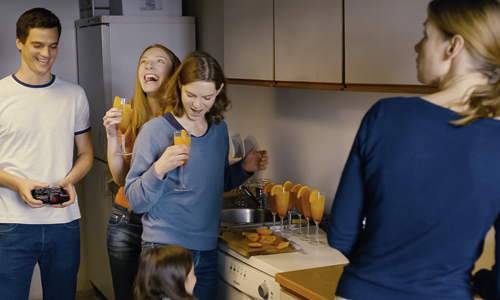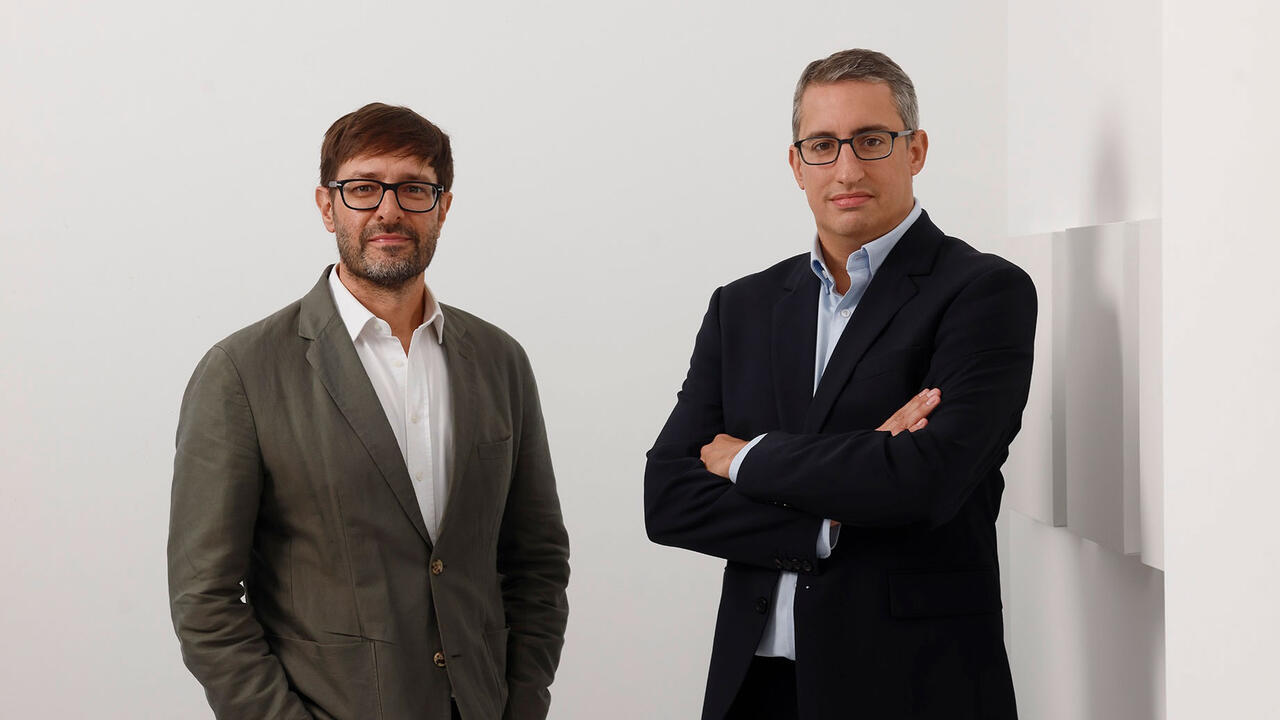Mood Vibrations
Ramon Zürcher’s choreography of motion and stasis in Das merkwürdige Kätzchen
Ramon Zürcher’s choreography of motion and stasis in Das merkwürdige Kätzchen

At this year’s Berlinale, people spoke in reverential, almost hushed tones about a film that is full of noise though anything but loud. Mostly it was referred to simply as ‘the little cat’ – a cute abbreviation reflecting the audience’s emotional rapport with this curious work. Currently, it is grabbing attention as it tours the international festival circuit before going on general release in German cinemas early next year.
Das merkwürdige Kätzchen (The Strange Little Cat, 2013) is the first feature film by Swiss filmmaker Ramon Zürcher. It does not conform to the standards of narrative cinema, but neither does it contain explicitly rebellious gestures. It doesn’t abandon storytelling, nor does it resort to dramaturgy in the conventional sense. Relatively short at 72 minutes, the driving force of Zürcher’s ‘narrative’ is in the spatial relations between bodies, language, movements, gazes and objects, rather than in the plot or the characters.
The film’s story is quickly outlined: a loose family gathering in a middle class apartment in Berlin that lasts a whole day and ends with a meal. There is no shortage of action, or at least action in miniature: people come and go, things are brought out and put away again, noises are made and words spoken, sometimes as if they, too, were objects being picked up and put down. ‘A child with a knife in its back’ – ‘Really, where?’ – ‘Nowhere’. A dog and a cat are also part of this sometimes fluid, sometimes halting choreography captured by a sequence of static shots. The space – comprising just the kitchen, corridor, living room and bathroom of the apartment – is cramped for the size of the ensemble cast. It is taken apart by close framing (but never really reassembled into an overview) and organized via lines of sight and changes of position: someone stands by the door and watches, someone else leaves the room, a third person comes in and lingers. Additional space is created by sounds off screen, an elaborate backdrop of noise including, singly or combined: a blender, coffee and washing machines, kitchen clatter, the cat’s mewing and the sustained, oddly contrived screaming of the youngest daughter, Clara. Additionally, scenes are repeatedly interrupted by monologues recounting past situations. These sequences settle briefly like alien visitors before immediately vanishing again.

Das merkwürdige Kätzchen resembles an ingenious mechanism; one that is operated by humans, animals and objects in equal measure and with no hierarchy. As in the 30-minute chain reaction in Peter Fischli and David Weiss’ Der Lauf der Dinge (The Way Things Go, 1987), each element becomes an impetus to another. Except that Zürcher’s Rube Goldberg machine is not an artistic experiment in a closed space, unfolding instead in the midst of ordinary, everyday life. The cat jumps up onto the table, the mother pushes it off again, a glass is knocked over and falls to the floor, Clara picks up a shard and cuts herself, her older sister takes her bloody finger and paints a red spot on Clara’s nose: ‘now you’re a clown.’
Born in 1982 in Aarberg, Switzerland, Ramon Zürcher has been studying directing at the German Film and Television Academy (dffb) in Berlin since 2006. Das merkwürdige Kätzchen was made as part of a seminar, led by the Hungarian director Béla Tarr, outside of the conventional German film funding system with its agenda geared towards TV-compatible formats. It was produced by Zürcher’s brother Silvan together with Johanna Bergel – both also dffb students. Before coming to Berlin, Zürcher graduated from Bern University of the Arts where he majored in video but also painted. This history is evident in Das merkwürdige Kätzchen, as are his affinities with the history of film: with Jacques Tati, for example, and his cinema of unruly objects and equally important everyday sounds. Zürcher’s still lifes bear traces of the painterly. His handling of image and sound – on- and off-screen – feels like a collage. Added to this is a sculptural understanding of the material world and a feel for installation-like arrangements of objects. The choppy montage sequences in particular, accompanied by post-rock chamber music, are reminiscent of museum display, focusing attention on individual things as if in an exhibition.
Although Das merkwürdige Kätzchen may come across primarily as a funny, lightweight film on the surface, it features a multitude of underlying tensions; the incidental meets the eventful, motion meets stasis, communication and collective experience meet withdrawal and isolation. As suddenly as rooms fill with life – the bustle of the animals, Clara in her unbridled curiosity, a magic dancing bottle spinning in a saucepan – apathy and emptiness soon take hold. Not least, Das merkwürdige Kätzchen is also a film about lapses and breakdowns in family communication. Locked into her earnestness, bordering on depression, the mother compulsively switches on the blender as soon as anyone tries to tell her anything. Sometimes a brief, even playful connection is established, but ultimately, the characters exist a world apart from each other.
Translated by Nicholas Grindell
















